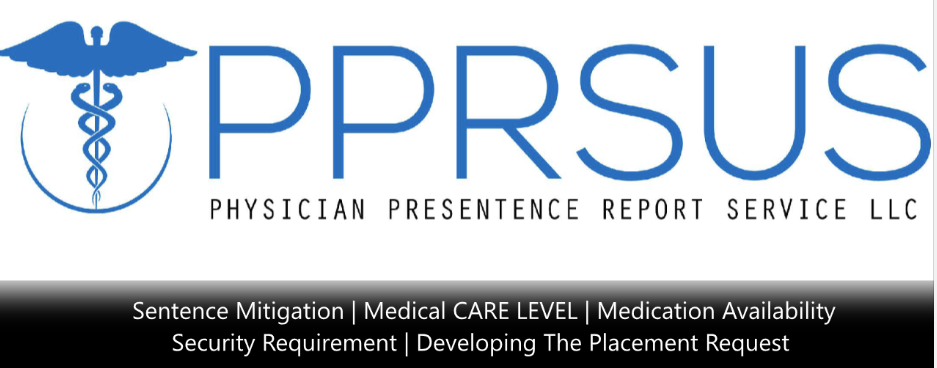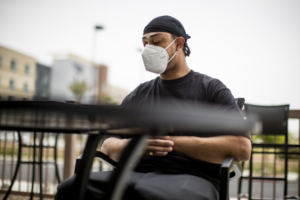Omicron, B.1.1.529- Fears Of Catching COVID In Prison
When I first started writing on Omicron, B.1.1.529 (a variant of COVID-19), it was back in January 2022,
At the time we have watched it become a ‘variant of concern. along with fears of catching COVID in prison more of a reality. While not as prevalent and lethal as Delta, it’s a more contagious spreader, and testing is best done with an oral swab which has to be done in a certain and exact way.
The Centers for Disease Control and Prevention (CDC) listed the possible symptoms of Omicron as:
- cough,
- fatigue,
- diarrhea
- headache,
- sore throat,
- fever or chills,
- nausea or vomiting
- shortness of breath,
- difficulty breathing,
- muscle or body aches
- new loss of taste or smell,
- congestion or runny nose
“However, the CDC noted that this list is not exhaustive, and people might experience different symptoms or combinations of symptoms.”
Unfortunately, this presents a challenge not only to all of us, but to all prisons (state and federal), jails, and detention centers. As history has shown us, these facilities likely may be unable to meet this medical need due to:
- the current ‘politicization of COVID-19’ and vaccinations,
- the physical nature of how inmates are housed,
- the continued refusal of some correction staff to get vaccinated, and masked
- the limited availability of medications and masks.
- I am adding to the list those with Post-COVID19 which I will cover later, but which no prison or jail has the staff, supplies, or finances to provide the support required to meet their needs.
Definition: The novel coronavirus, or SARS-CoV-2, is the deadly virus that led to COVID-19. Oversimplifying, a virus replicates its RNA by making copies of itself, but while coping, if a mistake in replication is made, these ‘mistakes’ result in creating the mutation.
How we get exposed(CDC.gov), is through these respiratory fluids that carry COVID, which occurs in three principal ways. Though not mutually exclusive, these are ‘physical particles, some of which we cannot see, but most of which can be blocked with physical masks; either N-95 masks, (double layer) surgical masks, or multi-layer cloth physical masks, by blocking the majority of these aerosolized viral fluids before they enter our respiratory system.

1st- Inhalation – Air Bourne Transmission (Top Photo) this 20-minute uTube, “a Must-View and Listen” – on How To Protect Yourself
While not perfect, a little knowledge is helpful, by Mike Hansen MD, Board Certified in Internal Medicine, Critical Care Medicine, and Pulmonary Disease.
Just the act of breathing in the air allows these small, fine, physical droplets including the aerosolized particles that contain these viruses, into our system. Here, the risk of transmission is greatest:
- within three to six feet from the infected source. Don’t be fooled though, as these
- exhaled aerosolized particles can travel, likely well past the
- 9-12 feet (and up to 27 feet) in an enclosed space.
2nd- The viral particles, as noted, can be physically exhaled as aerosolized droplets.
- As we breathe in these physical particles, they too can be blocked, for the most part
- by appropriate physical masks. But again, the risk of transmission is greatest:
- the closer we are to the infected person, which is where
- the concentration of these exhaled droplets and particles is greatest.
3rd- Rubbing your nose and eyes with viral residue on your hands just spreads the infection.
Therefore, ensuring an adequate supply of:
- soap and hand sanitizer are available to allow frequent washing and hand sanitizing
- is the responsibility of each facility, no matter whether state, county, or federal.
- Viral residue in indoor settings may originate from either:
- exhaled respiratory fluids, or
- from touching inanimate surfaces contaminated with the virus. Therefore;
- cleaning all surfaces is critical as well as
- understanding that when you cough or sneeze, please
- cover your mouth and nose with
- the sleeve of your shirt or arm, and
- not your bare hand if you can help it.
The basic protection we can all do:
- Social distancing indoors where practical, and
- outside where ≥6 feet cannot be maintained.
- All types of masks are reviewed by the (Mayo Clinic.Org), and this is a very good resource. Multilayer physical cloth masks are cheap, and most importantly, should be made available by each facility to be used in indoor spaces. Photo Credit: ACLU

- Having two or more layers of washable, breathable fabric
- Completely cover your nose and mouth
- Fit snugly against the sides of your face while not having any gaps
- Have a nose wire (or equivalent) to prevent air from leaking out of the top of the mask
- Follow the recommendations of science, take the appropriate medications approved by the FDA, and get vaccinated, and this goes for staff and inmates alike!
I understand that for some this may be a non-starter, but please understand that just because:
- we can’t see these physical droplets, or
- don’t know anyone personally who has passed due to COVID; that doesn’t mean that
- neither has happened; like the story of the tree that fell in the forest,
- it still fell even though we didn’t see, or hear it.
While you may have No Symptoms, you
- still could be a carrier,
- pass the virus on to an older loved one who is
- later hospitalized, and then
- may fatally succumb to the infection.
- That is not a burden that anyone would want to carry.
Your client’s looking for COVID sentencing relief, but were they vaccinated?
If your client’s going to prison and has not been vaccinated, it is important to learn why. If their reasoning is because it imposes on their freedom, or they just do not want to, I cannot believe that this reason is going to endear any sympathy for any alternative sentencing, from any court in the land.
Obviously, this does not take into account those with cancer, immunocompromised diseases, etc., as these are private conversations between your client and their physician. Should this be the case, I feel confident that the court would likely take this into consideration when considering your request.
If your client’s been vaccinated, has been wearing a mask, and falls into any of the following groups, now you have a good argument, especially with Omicron, B.1.1.529, and Delta ever-present across our country. The positive is that now in 2022, antivirals could be the ‘holy grail’ as far as controlling this pandemic, although their availability in a prison setting is anyone’s guess.






 Photo Credit,
Photo Credit, 


